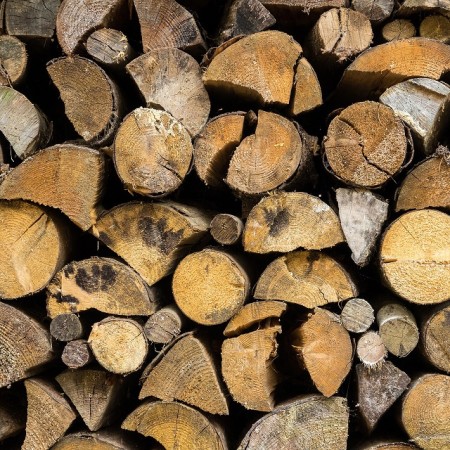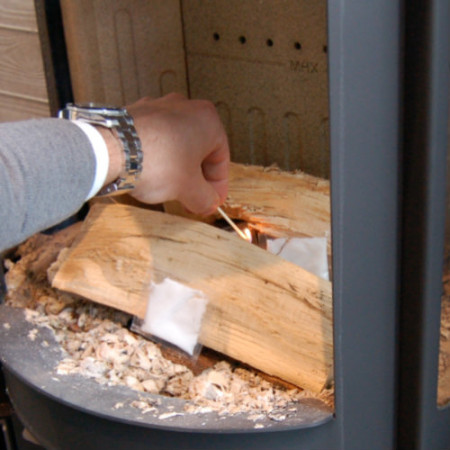The best way to chop and handle firewood
Fresh wood has a moisture content level of 50 % or more, meaning that a surprising amount of moisture must evaporate from the woodpile before you can use the firewood in your wood burning stove.
Luckily, the wood dries quickly. To speed up the process and shorten the time it takes for it to dry, there are few things you can do:
- Cut and chop your wood right after felling
- Fell and chop your firewood during the winter and let it dry during spring and summer. Often it takes two years for it to dry.
- Cut the wood into short pieces. Short pieces will dry quicker than long pieces. The evaporation from the end of the logs is 10-15 % higher than from the long sides.
- Chop your wood in a way that leaves as many sides as possible without bark. Bark functions as a shell which encapsules the moisture. The more sides of the logs that are free of bark, the more moisture will evaporate. Furthermore, chopped wood has a higher efficiency in the wood burning stove when it’s been chopped into appropriately sized pieces.
(Source: Lars Mytting’s book Solid Wood)
Tip: Split your firewood to the length that fits the size of the firebox in your stove.
With a length of 33-40 centimeters it is easy to stack the firewood. If the logs are just a little bit shorter, the woodpile will easily collapse.
How to chop wood?
It is easier to chop fresh wood. If too much time passes from the time of the felling, the wood will become hard and difficult to handle. The best time to chop hardwood is during the winter when the temperature is below 0° Celsius.
Wood chopping step-by-step
There are many ways to chop or split wood. The classic method is to use an axe. This is how you do it:
- Position yourself with your legs well apart
- Raise the axe up behind your head or over the shoulder
- Keep your arms extended
- When you swing the axe, the hand nearest the head of the axe should slide down the handle shaft
- It may help to bend your knees slightly before you strike
- Speed helps to deliver the cut
- Don’t hesitate or second guess – just cut
(Source: Lars Mytting’s book Solid Wood)
How to place the log on the chopping block
It is easier to split the log if you strike it at the top. It must be placed vertically on the chopping block.
If the log is uneven turn it upside down. The log has natural grains and it will split along these grains. In the spring, when the wood has been cut into pieces, the grains will be visible on the ends of the log after a few days.
Choose a good chopping block when chopping wood
The chopping block is important when you chop wood. It facilitates the process. A good chopping block is steady and has an appropriate size.
A chopping block must be:
- Broad
- Heavy
- Cut evenly at both ends
It provides you with a good base when you chop wood. It’s a good idea to place the chopping block on a hard surface – this way all the energy will enter the log as it should as opposed to disappearing into the ground.
How tall should the chopping block be?
The height of the chopping block matters. It is a good idea to take your back into consideration when choosing a height. But you have to remember that the log will add to the height of the chopping block. If the block is too high, the axe won’t gain enough speed before it hits the log.
You have found the right height when the edge of the axe strikes the log at a somewhat right angle.
Rule of thumb when choosing a chopping block
When you chop wood which has a length of 30-40 centimetres, the chopping block should be knee-high or lower.
Tip: Fix a car tyre to the chopping block. The tyre will keep the pieces of wood together when you split it. This way you won’t have to pick up the pieces from the ground when they fall. Oherwise, get this handy rubber ring, which is bolted to the chopping block so that the firewood stays in place during splitting.




